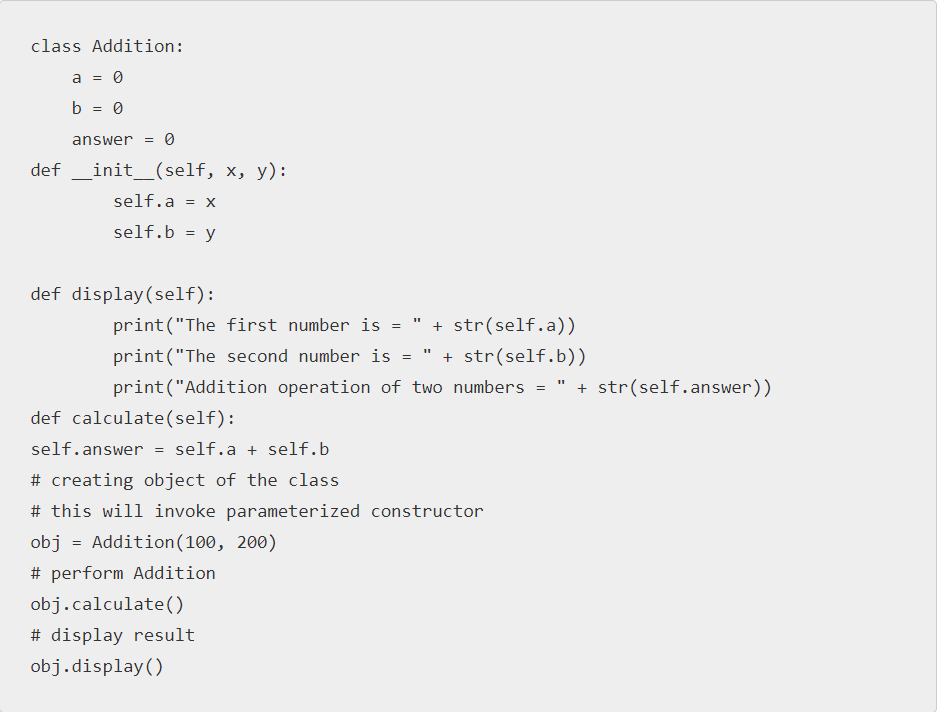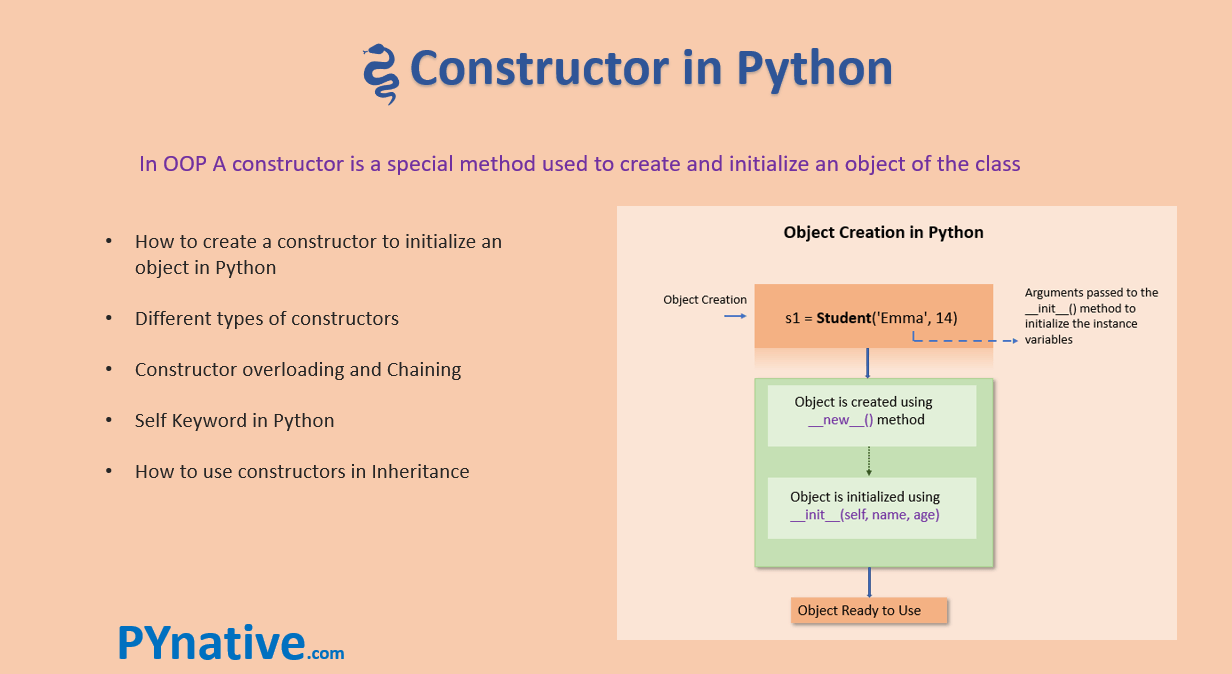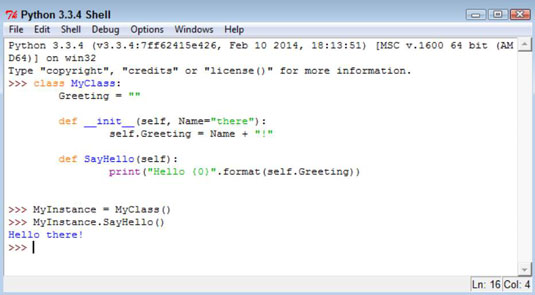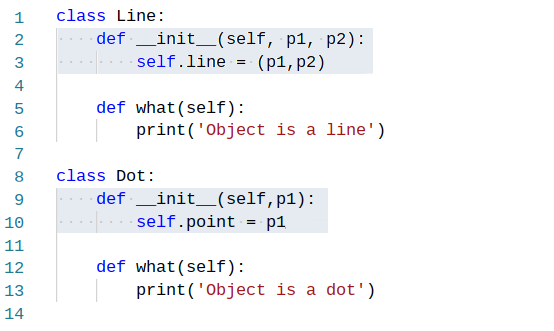python class constructor default values
Return A 42 def __init__ self b_value. Mutable default arguments dont generally do what you want.

Constructor In Python Python Guides
Initiating objects from different classes will call different constructors.

. Selftotal_marks total_marks selfobtain_marks obtain_marks Incrementing the counts each time this constructor is called Studentcounts 1 creating object of type Student student1 Student100 84 student1 Student100 83 student1. As others have written Python does not support multiple constructors. In data classes you can access a default value of class attribute.
Body of the constructor. SelfwordList else. The default constructor is a simple constructor which doesnt accept any arguments.
PrintConstructors with default arguments else. Return self_a asetter def aself value. Def __new__ cls args kwargs.
The example belwo shows two classes with constructors. SelfwordList wordList if adjacencyList is None. Syntax for creating constructor in Python.
Self takes the address of the object as its argument and it is automatically provided by Python. Create a new instance of the target class. Self_a Plots_a property def aself.
A 0 b 0 answer 0 def __init__self f s. Self_a None selfreset_default_values def reset_default_valuesself. By default this method takes one argument known as self.
Example Default constructor in Python The constructors are to initialize assign values to the data members of the class when an object of the class is created. Def __init__ self nameUndefined number-1. In Python the class name provides what other languages such as C and Java call the class constructorCalling a class like you did with Person triggers Pythons class instantiation process which internally runs in two steps.
_a 1 def __init__self. Constructor with parameters is known as parameterized constructor. Printselfmsg creating object obj Test objdisplay.
Def __init__self edateNone fdate. Default constructors are useful when all the objects of the class need to be initialized with the same values In the below example default constructor __init__ initializes Test class attribute. Self_a value plot Plots printplota plota 42 printplota plotreset_default_values printplota.
Selfname name selfnumber number. Then two objects are created but different constructors are called. Set Optional Arguments for a Class Constructor in Python.
Selfa f selfb s def displayself. Print Initialize the new instance of B self. Constructor with default values age and classroom def __init__self name age12 classroom7.
With dataclasses a feature added in Python 37 there is now yet. Printselfname selfage selfclassroom creating object of the Student class emma StudentEmma emmashow kelly StudentKelly 13. However you can emulate them easily as follows.
Def __init__ self fooNone. Selffoo if foo is None else foo. A constructor that Python lends us when we forget to include one.
It is an empty constructor- without a body. Its definition has only one argument which is a reference to the instance being constructed. The constructor of a class is unique.
Default Constructor in Python. Body of the constructor. Selfanswer selfa selfb obj Addition100 200 objcalculate objdisplay.
The parameterized constructor takes its first argument as a. Foo num0 print Custom val. PrintFirst number strselfa printSecond number strselfb printAddition of two numbers strselfanswer def calculateself.
Initialize the instance with suitable instance attribute values. Print Initialize the new instance of A self. Def __init__ self fooNone.
SelfadjacencyList else. If wordList is None. In Python a constructor is called by the __init__ method and it is invoked whenever an object is created.
Python class class Student. Def __init__ self a_value. To continue with the.
A_value a_value class B. Python program to illustrate the use of class constructor class Addition. Selfname name selfage age selfclassroom classroom display Student def showself.
When constructing an object of this classs type we could optionally overwrite the value. Format Foo Default val. A pretty useful technique for simulating multiple constructors in a Python class is to provide __init__ with optional arguments using default argument values.
We can define as many parameters as we need. If any of the arguments are mutable then you need to use the usual idiom. This one does absolutely nothing but instantiates the object.
Counts 0 creating Python constructor def __init__self total_marks obtain_marks. Print Thank you for instantiating me ddemo. Def __init__ self wordListNone adjacencyListNone.
From dataclasses import dataclass dataclass class Foo. Selfmsg Default constructor a method for printing data members def displayself. Ab_classespy class A.
To create a constructor in Python we need to define a special kind of magic method called __init__ inside our class. Default constructor def __init__self. Default values of newly created objects can be set in the constructor.

Constructor In Java Simplilearn

Dart Class Constructor Default Value Code Example

How Default Base Class Constructors Are Used With Inheritance Webucator
Python Tutorials Constructor Class And Object Init

Constructor In Python Guide Pynative

Constructor In Python Python Guides
What Is The Difference Between Default And Parameterized Constructor Pediaa Com

How To Create A Constructor In Python Dummies

Python Class Constructor Default Parameterized Developer Helps

Javascript Class Without Constructor Code

Binary Search Tree C Cheat Sheet By Bearteddy Http Www Cheatography Com Bearteddy Cheat Sheets Binary Search T Cheat Sheets Cheating Free Programming Books

Constructors In Python For Data Science Pst Analytics

Constructor In Python Python Guides

Learn Constructor In Python With Examples Python Object Oriented Programming Python Programming

Constructor In Python Working Of Python Constructor Wih Sample Code



